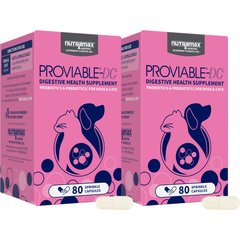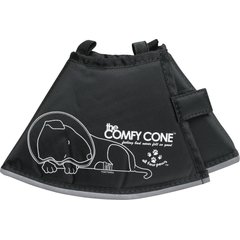Older Cats and Protein – A Delicate Balance
Cats are true carnivores, and as such, they have relatively higher requirements for protein in their diets than do dogs. This is true during all of a cat’s life stages, but when they hit their senior years, the situation gets a little complicated.
Chronic kidney disease (CKD) is extremely common in older cats and can only be diagnosed via traditional means when the condition is quite advanced (when two-thirds to three-quarters of a cat’s kidney function is already lost). Since CKD is a chronic, oftentimes slowly progressive disease, it follows that many older cats have reduced kidney function that is not yet bad enough for our laboratory tests to diagnose.
Overfeeding protein, particularly poor quality protein, to cats with CKD worsens their condition. As a result, some senior cat foods have been designed to have reduced protein levels, presumably based on the assumption that many of these individuals have undiagnosed kidney disease and would benefit from a lower level of protein in their diets.
Recommended Pet Products
- Nutramax Proviable Probiotics & Prebiotics Digestive Health Supplement for Dogs & Cats, 160 count$89.98Chewy Price
- Fera Pets USDA Organic Pumpkin Plus Fiber Support for Dogs & Cats, 90 servings$34.95Chewy Price
- All Four Paws Comfy Cone E-Collar for Dogs & Cats, Black, Small$20.24Chewy Price
- Virbac Epi-Otic Advanced Ear Cleaner for Dogs & Cats, 4-fl oz bottle$12.34Chewy Price
Not so fast. Another common problem in older cats is sarcopenia, the loss of skeletal muscle mass and strength associated with the aging process. Sarcopenia can have many causes including protein deficiency, systemic diseases, reduced activity levels, and musculoskeletal and neurologic disorders. There hasn’t been much research into the condition in animals, but one study did reveal that cats between the ages of ten and fourteen have a harder time digesting protein and other important nutrients like fat and energy.1 Also, studies in older people have shown that eating more protein can reduce muscle mass loss.2
So it appears that the owners of older cats are between the proverbial rock and a hard place, yes? Until more research into the optimal dietary protein levels for senior cats is done, I think the best solution lies in focusing more on protein quality rather than quantity. I typically recommend that the owners of healthy, older cats neither increase nor decrease the amount of protein in their pets’ diets but maintain the level that worked well for that individual in the past (after all, it got them to their golden years in pretty good shape).
I urge owners to pay extra attention to the quality of their older cat’s food. Check out the ingredient list. A highly digestible protein source like chicken should be listed first, indicating it is the predominant ingredient by weight. Eggs also have an exceptionally high biologic value for cats, meaning that the protein is actually utilized by the body rather than excreted as waste. It is this unused protein that results in the potentially detrimental extra work for the kidneys that we want to avoid in older cats.
To sum up, I think our best option, until future research proves otherwise, is to keep the amount of protein we feed older cats similar to that which they ate in their prime and to do all we can to ensure that it is coming from high quality and digestible ingredients.

Dr. Jennifer Coates
Sources
1. Some nutritional aspects of aging in cats and dogs. Taylor EG, Adams C, Neville R. Proc Nutr Soc. 1995. 54:645-656.
2. Amino acids and muscle loss with aging. Fujiita S, Volpi E. J Nutr. 2006. 136:277S-280S.
Image: Schubbel / via Shutterstock




